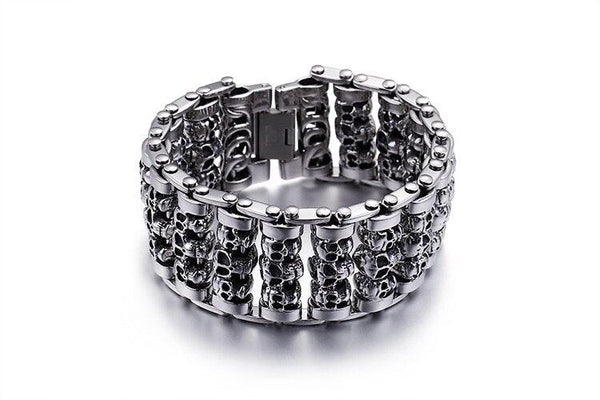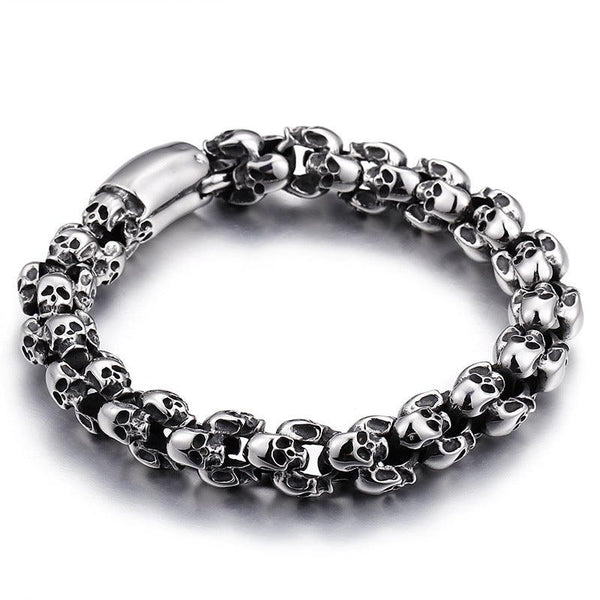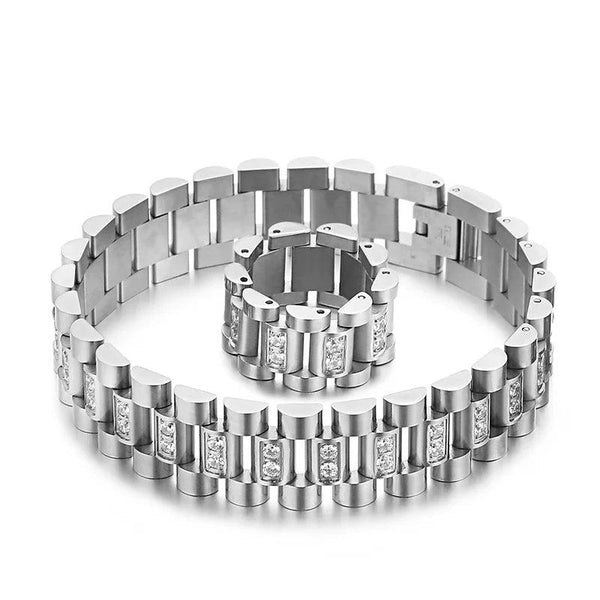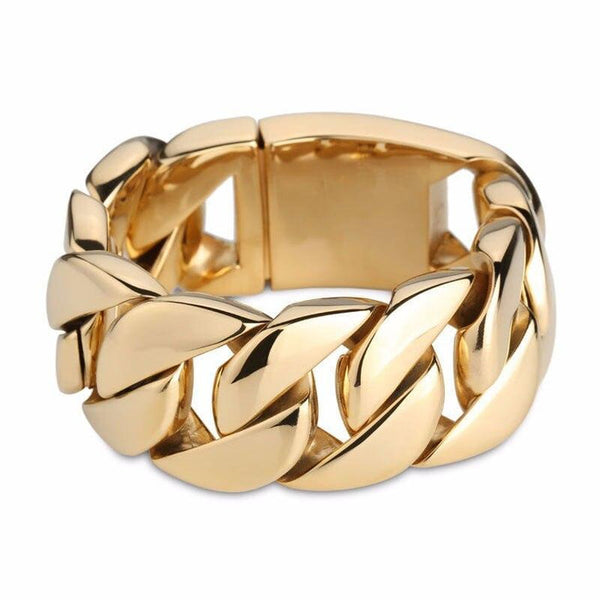Is Stainless Steel Jewelry Hypoallergenic?
Allergic reactions to jewelry are a common concern for many people, particularly those with sensitive skin. The rise in awareness about skin allergies has fueled the demand for hypoallergenic jewelry, which is designed to minimize these issues. This article aims to explore whether stainless steel jewelry qualifies as hypoallergenic, examining its properties and comparing it with other hypoallergenic metals.

What is Hypoallergenic Jewelry?
Hypoallergenic jewelry refers to pieces that are unlikely to cause allergic reactions in individuals prone to skin sensitivities. This is achieved by using metals that are less reactive and do not contain common allergens such as nickel. The importance of hypoallergenic jewelry lies in providing safer options for those who experience discomfort or dermatitis from wearing conventional jewelry.
Hypoallergenic Jewelry Metals
Various metals are known for their hypoallergenic properties:
Stainless Steel: Stainless steel is an alloy composed primarily of iron, chromium, and nickel. The presence of nickel can vary depending on the grade of stainless steel. While some grades like 304 stainless steel contain nickel, the amount is usually low and less likely to cause allergic reactions compared to lower-quality alloys.
Titanium: Titanium is exceptionally biocompatible and hypoallergenic. It is lightweight, corrosion-resistant, and widely used in medical implants for its compatibility with human tissues. These qualities make titanium an excellent choice for hypoallergenic jewelry.
Gold: ;Pure gold (24K) is inherently hypoallergenic because it does not contain alloying metals that can trigger skin reactions. However, lower karat gold alloys (e.g., 18K or 14K) may contain metals like nickel, which can affect its hypoallergenic properties.
Silver: Sterling silver is generally hypoallergenic for most people, but it may tarnish over time and cause reactions in some individuals due to its copper content.
Each of these metals offers unique characteristics that cater to different preferences and sensitivities.
Is 304 Stainless Steel Hypoallergenic?
One common type of hypoallergenic jewelry is made from 304 stainless steel. Stainless steel is an alloy composed primarily of iron, with chromium and nickel being the key alloying elements. While 304 stainless steel contains nickel, it is typically in a small enough quantity (around 8-10%) that it does not pose a significant risk of triggering allergic reactions in most people. The chromium content forms a protective layer on the surface of the steel, further reducing the release of nickel ions and enhancing its hypoallergenic properties.
Research indicates that the nickel release rate from 304 stainless steel is generally low and falls within the limits considered safe for prolonged skin contact according to regulatory standards. This makes 304 stainless steel a viable option for hypoallergenic jewelry, particularly for those who prefer the aesthetic and durability it offers compared to other materials.
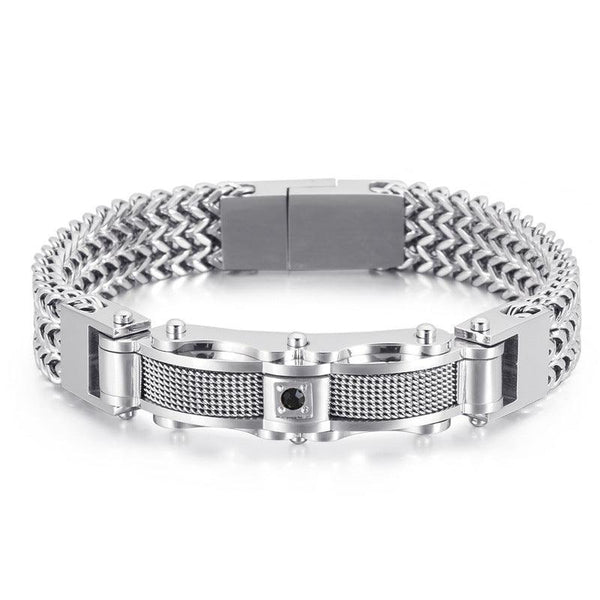
Is Titanium Jewelry Hypoallergenic?
Titanium's biocompatibility and corrosion resistance make it an ideal choice for hypoallergenic jewelry. It is often recommended for individuals with severe metal allergies due to its inert nature and the absence of allergenic metals.
Is Gold-Plated Stainless Steel Hypoallergenic?
Gold-plated stainless steel combines the durability and affordability of stainless steel with the aesthetic appeal of gold. The plating process involves applying a layer of gold to the stainless steel surface, creating a stylish finish that is less likely to cause skin reactions compared to direct contact with nickel-containing metals. The hypoallergenic properties of gold-plated jewelry depend on the base metal used. Nickel-free alloys such as stainless steel is preferred bases to minimize skin reactions.
Nickel Free Jewelry
Nickel is a common allergen known to cause contact dermatitis in sensitive individuals. Jewelry labeled as "nickel-free" ensures that it does not contain this allergenic metal. Choosing nickel-free jewelry is crucial for those with known nickel allergies to avoid skin irritation and allergic reactions.
What Jewelry is Hypoallergenic?
In summary, hypoallergenic jewelry includes stainless steel, titanium, pure gold, and certain silver alloys. These materials are chosen for their low reactivity and minimal risk of causing allergic reactions.
Hypoallergenic Metals for Jewelry
Choosing the right hypoallergenic metal depends on individual sensitivities and preferences. Manufacturers continue to innovate by using safer alloys and improving production processes to meet the demand for hypoallergenic jewelry.
Choosing Hypoallergenic Jewelry
When selecting hypoallergenic jewelry, consider the following tips:
Material Composition: Opt for jewelry made from metals with minimal allergenic potential, such as titanium, pure gold, or stainless steel.
Certifications: Look for certifications or assurances from reputable manufacturers regarding nickel content and hypoallergenic properties.
Skin Test: Conduct a patch test if you have sensitive skin to gauge your reaction before wearing jewelry for an extended period.
Conclusion
In conclusion, stainless steel jewelry, particularly 304 stainless steel, provides a viable option for those seeking hypoallergenic alternatives due to its low nickel release rate and protective chromium layer. It offers durability and style while being a more affordable choice compared to precious metals like gold and platinum. It offers a durable and stylish alternative to traditional hypoallergenic metals like gold and platinum. When combined with careful selection and proper care, hypoallergenic jewelry allows individuals with sensitive skin to enjoy accessorizing without compromising their comfort or health.
By understanding the properties of different metals and their implications for skin sensitivity, consumers can make informed choices that align with their preferences and needs in jewelry.Understanding the properties of different metals helps consumers make informed choices when selecting jewelry that suits their skin sensitivities.
---------------------------------------
This article provides a comprehensive overview of hypoallergenic jewelry, focusing on stainless steel's suitability as a hypoallergenic material and comparing it with other metals.



